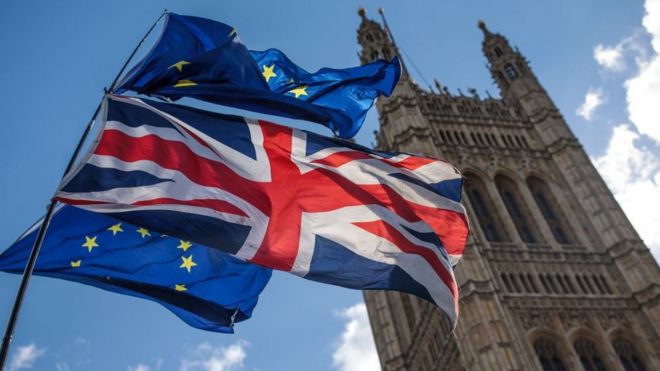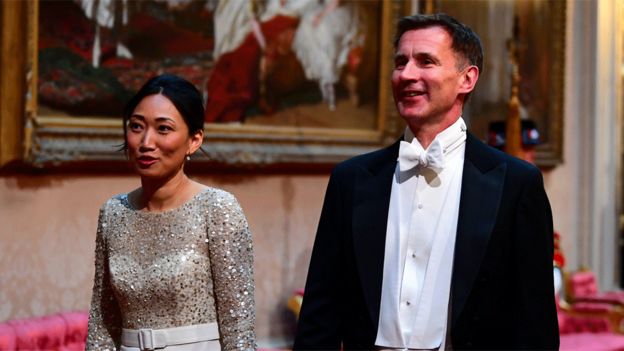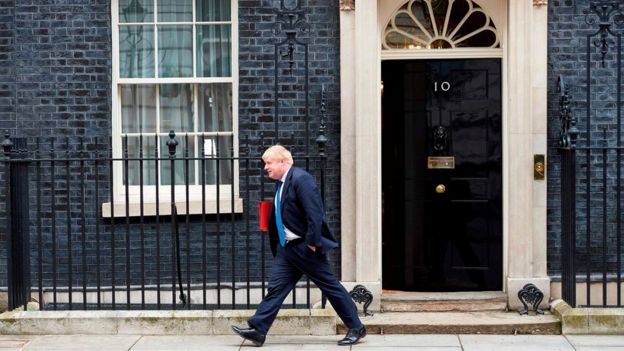 GETTY IMAGES
GETTY IMAGES
Each will now try to convince the 160,000 Conservative Party members to vote for them.
One of the biggest issues will be Brexit: where they stand, how they plan to deliver it and whether that will be by the deadline of 31 October.
 PA
PAJeremy Hunt
The foreign secretary says there is a prospect of doing a better deal with the EU. He is in favour of changes to the Withdrawal Agreement negotiated by Theresa May and he thinks it is possible to get them made by 31 October.
He wants changes to the Irish backstop - that's the insurance policy, agreed by the UK and the EU, to avoid a hard Irish border (a border with checks and infrastructure).
After Brexit, Northern Ireland and the Republic of Ireland could be in different customs and regulatory regimes, which could mean products being checked at the border.
To avoid this, the backstop would keep the UK in a customs union with the EU (until both sides reached a trade agreement that would avoid a hard border) - but this is controversial as it would prevent the UK from doing its own trade deals.
Mr Hunt says he has had "conversations with European leaders" who "understand that the backstop will not get through parliament, they may not have understood that before".
He proposes sending a new negotiating team team to Brussels, which would include representatives of the European Research Group (the group of Conservative MPs who support harder forms of Brexit) and members of Northern Ireland's Democratic Unionist Party.
The foreign secretary says if the only way to leave the EU was with no deal then he would do that but it is not his "preferred option".
Potential obstacles: The conclusions of the EU when it decided the UK could delay leaving until the end of October clearly state: "The European Council reiterates that there can be no opening of the withdrawal agreement." The withdrawal agreement is the legally binding part of the divorce deal, agreed by Theresa May and the EU, which contains the Irish backstop plan.
 GETTY IMAGES
GETTY IMAGESBoris Johnson
The former foreign secretary wants to remove the Irish backstop plan from the Withdrawal Agreement but he has said the UK will leave on 31 October "deal or no deal".
Mr Johnson says the "way to get a good deal is to prepare for no deal".
But he also says a no-deal exit would cause "some disruption".
Mr Johnson suggested the solution to the current deadlock would be to replace the Irish backstop with "alternative arrangements" to avoid a hard border, so as to facilitate a "managed exit" from the EU.
He has also said he would withhold the £39bn "divorce" payment the UK is due to give the EU (this was negotiated as part of Theresa May's Withdrawal Agreement). Mr Johnson said the money would be retained until there was "greater clarity about the way forward".
Potential obstacles: A representative of the head of the European Council said at the end of January: "The backstop is part of the withdrawal agreement, and the withdrawal agreement is not open for re-negotiation." Preparing for no deal didn't enable Theresa May to get the changes she wanted to the withdrawal agreement and it's not clear how Mr Johnson can be confident of greater success. The "divorce bill" is also part of the Withdrawal Agreement, and it's highly likely the EU would insist on the UK meeting its financial obligations before agreeing to any other deal. Refusal to do so would sour relations and could even end up in court.
https://www.bbc.com/news/uk-politics-48496082
